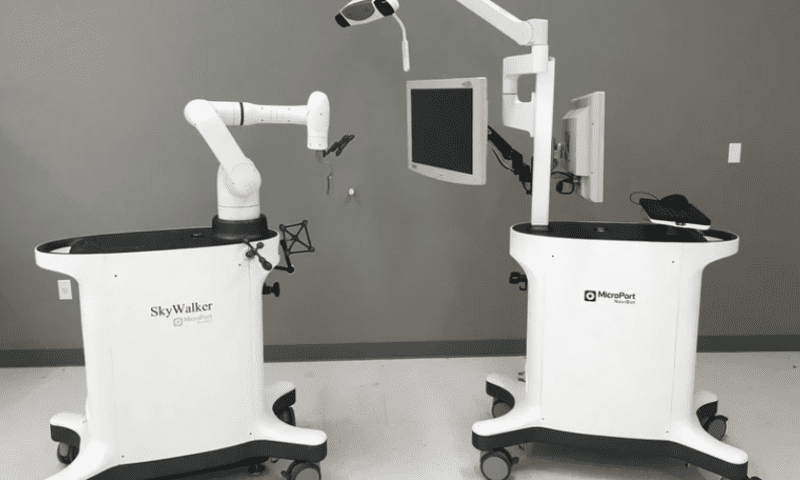Not so long ago in our very own galaxy, the FDA saw fit to expand its list of authorized robotic surgery systems—no epic interplanetary battles needed.
Judging by the agency’s newly bestowed 510(k) clearance, the force is strong with the latest addition to the list: the SkyWalker platform from MicroPort NaviBot, a Massachusetts-based subsidiary of Chinese medtech giant MicroPort Scientific.
The surgical robot can currently be used only in total knee replacement surgeries and is designed to be compatible with MicroPort’s Evolution medial-pivot knee implant system for those procedures. MicroPort NaviBot said it’s already in the process of developing additional applications for the system and is working alongside sister company MicroPort Orthopedics to do so.
Surgeons can use the SkyWalker system both before and during orthopedic surgeries since it includes a surgical platform and accessories, as well as a navigation console that not only guides physicians through a procedure but also can be used to help plan out the surgical approach beforehand.
The preoperative planning system features intelligent algorithms that analyze both a patient’s CT scans and information about the chosen implants and other surgical devices to help devise the most effective surgical plan.
Once the plan is in place and the operation has begun, the SkyWalker surgical robot’s lightweight mechanical arm ensures that implants are being placed as precisely as possible to grant patients maximum range of movement. The arm also moves quickly and efficiently in removing any necessary pieces of bone and cartilage.
Results of a clinical trial published last year described the use of the SkyWalker system to help surgeons both plan out and perform total knee arthroplasty procedures for 31 patients. All of the surgeries were successful, the researchers said, with 100% of all resulting errors in the patients’ hip-knee-ankle angles falling within three degrees of the intended position.
“The ‘SkyWalker’ system has good osteotomy accuracy, can achieve the planned angles well and is expected to assist surgeons in performing accurate bone cuts and reconstructing planned lower limb alignments in the relevant clinical applications in the future,” they concluded.
Robotic-assisted surgery systems have been on a roll with the FDA this year. In just the last few months, robotic platforms from XACT Robotics and Johnson & Johnson have been granted stateside authorizations from the agency, as has an initiative to embed Siemens Healthineers’ mobile cone-beam CT imaging technology into Intuitive Surgical’s automated lung biopsy device.
And SkyWalker isn’t the only system bringing space travel to mind. Earlier this month, Virtual Incision won a grant from NASA to send its own miniaturized surgical robot to the International Space Station in 2024.

